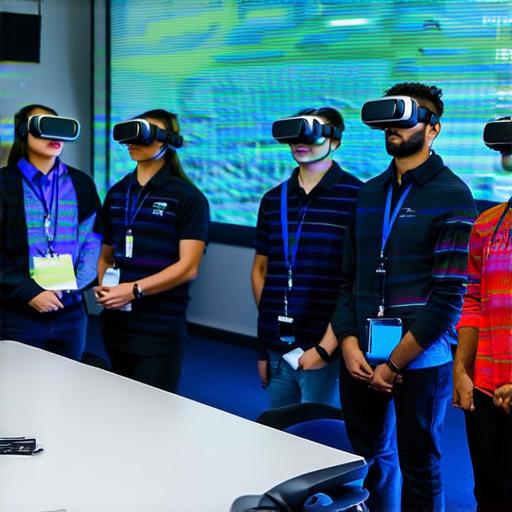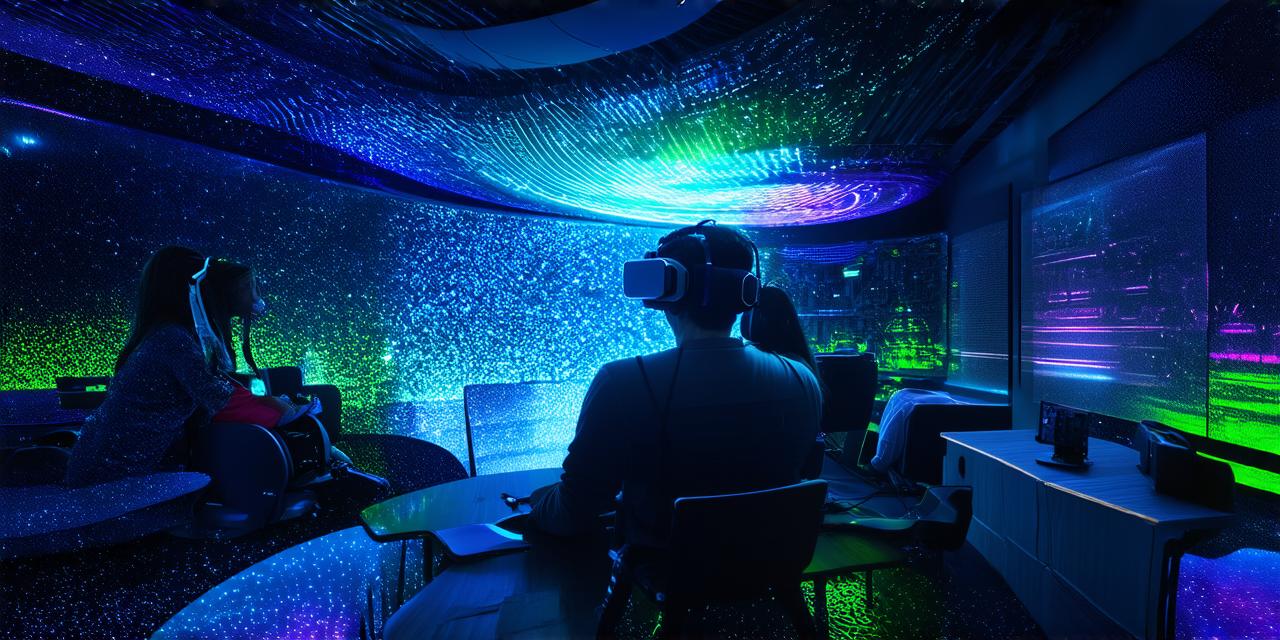Introduction:
Virtual reality technology has come a long way since its early days. Today, VR is being used in a variety of fields, from gaming to healthcare, to education. In the field of education, VR offers a unique opportunity to transform the traditional classroom experience and create a more engaging, interactive, and personalized learning environment.
The Power of Immersive Learning:
One of the key benefits of VR in education is its ability to create an immersive learning experience. By placing students in a virtual environment that simulates real-world scenarios, VR can help them develop a deeper understanding of complex concepts and gain practical skills in a safe and controlled environment. For example, medical students can use VR simulations to practice surgical procedures without risking patient safety, while history students can explore ancient civilizations and cultures in a virtual time machine.
Improved Engagement and Retention:
Virtual reality technology has the power to improve student engagement and retention by making learning more interactive and personalized. By allowing students to interact with educational content in a variety of ways, VR can help them develop a deeper understanding of the material and remember it better. Studies have shown that students who use VR in the classroom are more engaged and motivated to learn than those who use traditional teaching methods.
Better Accessibility:
Virtual reality technology can also improve accessibility for students with disabilities. For example, students with visual impairments can use VR headsets with audio descriptions to explore virtual environments, while students with hearing impairments can use closed captioning and other accessibility features to understand the content. Additionally, VR can help students with ADHD or other learning difficulties by providing a more engaging and interactive learning experience that keeps them focused and motivated.
Virtual Field Trips:
Virtual reality technology can also transform traditional field trips by allowing students to explore distant locations and historical sites without leaving the classroom. For example, students can take virtual tours of museums, historical landmarks, or national parks, or even visit outer space or underwater worlds. Virtual field trips can be especially beneficial for students who live in rural areas or have limited access to cultural and educational resources.
Collaborative Learning:
Virtual reality technology can also facilitate collaborative learning by allowing students from different locations to work together on projects and assignments in a virtual environment. For example, students from different schools or countries can collaborate on a group project using VR tools such as shared whiteboards, document editors, and chat platforms. This type of collaboration can help students develop teamwork and communication skills that are essential for success in the modern workplace.
Case Studies:
There are many examples of how virtual reality technology is being used in education to improve student learning and engagement. For example, a study conducted by the University of Maryland found that students who used VR in their biology class had a better understanding of complex concepts than those who used traditional teaching methods. Another study conducted by the University of California, Irvine found that students who used VR in their psychology class were more engaged and motivated to learn than those who used traditional teaching methods.
Summary:
Virtual reality technology has the potential to revolutionize education by creating a more engaging, interactive, and personalized learning experience. By placing students in virtual environments that simulate real-world scenarios, VR can help them develop new skills, enhance their understanding of complex concepts, and improve their overall performance in school. While there are still some challenges to overcome, the future of virtual reality in education is bright, and we can expect to see many more innovative applications in the years to come.

FAQs:
1. What types of VR technology are being used in education?
There are several types of VR technology that are being used in education, including head-mounted displays (HMDs), handheld controllers, and motion chairs.
2. How is VR technology being used in the classroom?
VR technology is being used in the classroom to create immersive, interactive, and personalized learning experiences. For example, it can be used for simulations, virtual field trips, collaborative projects, and more.
3. What are some of the potential benefits of using VR in education?
Some of the potential benefits of using VR in education include improved engagement and retention, better accessibility for students with disabilities, and the ability to transform traditional field trips.
4. Are there any studies that have shown the effectiveness of VR in education?
Yes, there are several studies that have shown the effectiveness of VR in education, including those conducted by the University of Maryland and the University of California, Irvine.
5. What challenges need to be overcome for VR to become widely adopted in education?
Some challenges that need to be overcome for VR to become widely adopted in education include cost, accessibility, and the need for specialized training for educators and students.
